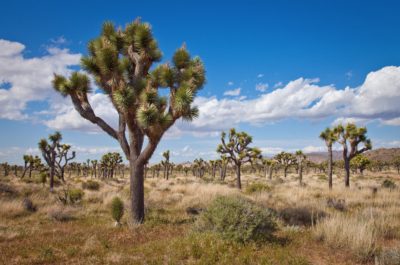
When experts talk about climate change, one of the key factors they point to as a cause is deforestation, which is happening all over the world for a variety of reasons. As people attempt to expand their farms by making room for more crops or livestock, plant oil palms in the rainforest they’ve just cut down, or knock down trees for paper production, the world loses more and more forest cover that is crucial to the environment.
Oftentimes, when people think of forests they think of the lush rainforests in South America or the tall redwoods in California. There are a number of other places that contain forests as well, and one of those little known places is throughout the barren deserts all across the Earth. Though forests in the desert might sound crazy, they are little-known and sparse, making them hard to spot.
Previous studies into these forests have yielded results that showed promising coverage in desert areas, but this most recent study conducted by the U.N. Food and Agriculture Organization (FAO), a new technology was used that identified much more in the way of tree coverage.
To be precise, they discovered that trees like baobab and acacia shade 467 million more hectares of land than previously thought, which is about half the size of the United States, and could increase previous estimates of global forest cover by at least 9 percent.
“Drylands absorb more carbon than we thought and they can actually help mitigate climate change,” Eva Muller, director of FAO’s forestry policy and resources division told the Thomson Reuters Foundation.

Despite the forests being small and spread out, the discovery has led to some exciting ideas for how to best use this information. Since desertification, the process of fertile land becoming desert because of drought, deforestation or unsuitable agricultural practices, is a real threat to both the environment and the people that live off the land, this could be a way of reversing some of that damage. The analysis could prove helpful for scientists looking for areas to restore trees and vegetation, since the locations evidently allow for growth, which could slow down desertification.
The analysis was done using a data collection tool called Collect Earth, which takes satellite images captured by Google Earth and allows researchers to better analyze the deserts and forests at an incredible resolution of less than one meter.
“This allowed us to visually see and almost count the trees,” said Jean-Francois Bastin, one of the study’s authors.
In Africa alone, scientists estimate that as much as two-thirds of the continent’s current arable land, which is land that’s suitable for crops, will be lost to desertification by 2025 and that 60 million people will be forced to leave their homes within five years. These figures from the United Nations are alarming, and are certainly a sign of things to come for the rest of the world.
With countries already facing a refugee crisis, whether it’s people fleeing or people attempting to get in, this added pressure to take in people whose land has been lost to climate change could go horribly wrong. That’s why this new study looking into hidden forests is so promising, and now it’s up to scientists to determine how to use this information to effect positive change.


